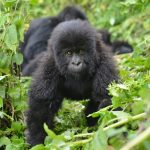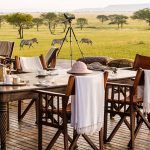Visit the Pian Upe Wildlife Reserve

Pain Upe Wildlife Reserve is the largest reserve and the second largest protected area after Murchison Falls National Park. The reserve is a conservation area in the Karamoja sub region of north-eastern Uganda. With Uganda’s affluence of attractions, a single visit to Pian Upe Wildlife Reserve is not enough for one to ascertain the disclosures this reserve offers.
This natural resource is a conservation area in the Karamoja sub-region of north eastern Uganda. The southern part of the reserve was gazetted as the Debasien Animal Sanctuary in 1958, a government led project to convert land just south of River Girik threatening the viability of wildlife conservation in the entire area. In 1964, the area expanded northward and was renamed Pian Upe Wildlife Reserve.
The wildlife reserve covers an area of about 2,788m to the north of mountain Elgon and it is now under the management of Mountain Elgon Conservation Area. It lies in a semi-arid country which usually receives rainfall in April and more considerable light rainfall from June to early September.
The reserve is covered by wooded grassland and is home to two pastoralist tribes from which it gets its name ‘the Pian’ being part of a sub group of the Karamoja and the ‘Upe’ being a Kalenjin speaking people more widely known as the Pakot within Kenya and Uganda. These two tribes have a history of armed conflict mostly related to cattle rustling.
Location: The park headquarters are at Murujore on Mbale-Mororto road about 90km from Mbale town. You will now you have entered the reserve shortly after passing through Chepsuunya trading centre, after about two hours’ drive.
Taking a Uganda safari to visit Mount Elgon and Kidepo Valley National Park will widen you chances to link to the Pian Upe Wildlife Reserve. This reserve will make you to be among the first world travelers to explore the virgin pristine. Travelers on this part of Elgon will have a chance to enjoy the views of different wildlife like populations of lions, elephants, black rhinos and giraffes, these are now locally extinct.
Populations of the plains zebra, common eland are also threatened grants gazelle. The most commonly sighted mammals in the reserve is the Oribi. Others known to inhabit the area as of 1996 include, carnivores, Jackals, Topi, cape buffalo, spotted hyenas, servals, leopards, created porcupine, hare, roan antelope, blue and common duiker, wildcats, primates, common eland among others.
Besides wildlife, the reserve is also a birders paradise hence it is a perfect place for any bird lover planning to undertake birding safaris in Uganda. These include great hartlaub’s bustard, Jackson horn bill, and white-headed buffalo-weaver among others. Other activities include mountain climbing, study tours, camping sightseeing.
Where to stay
Four Banda’s exist in the park headquarters and there are very many lodges just kilometres from the reserve headquarters. To access the reserve, foreigners pay $5 non-residents pay $10 and Ugandans and East Africans pay shs2, 500. For guided tours per walk, non-resident foreigners pay $30 and foreign residents pay $15 while Ugandans and East African pay shs.10000. Vehicle hire is at $30.






0 Comments